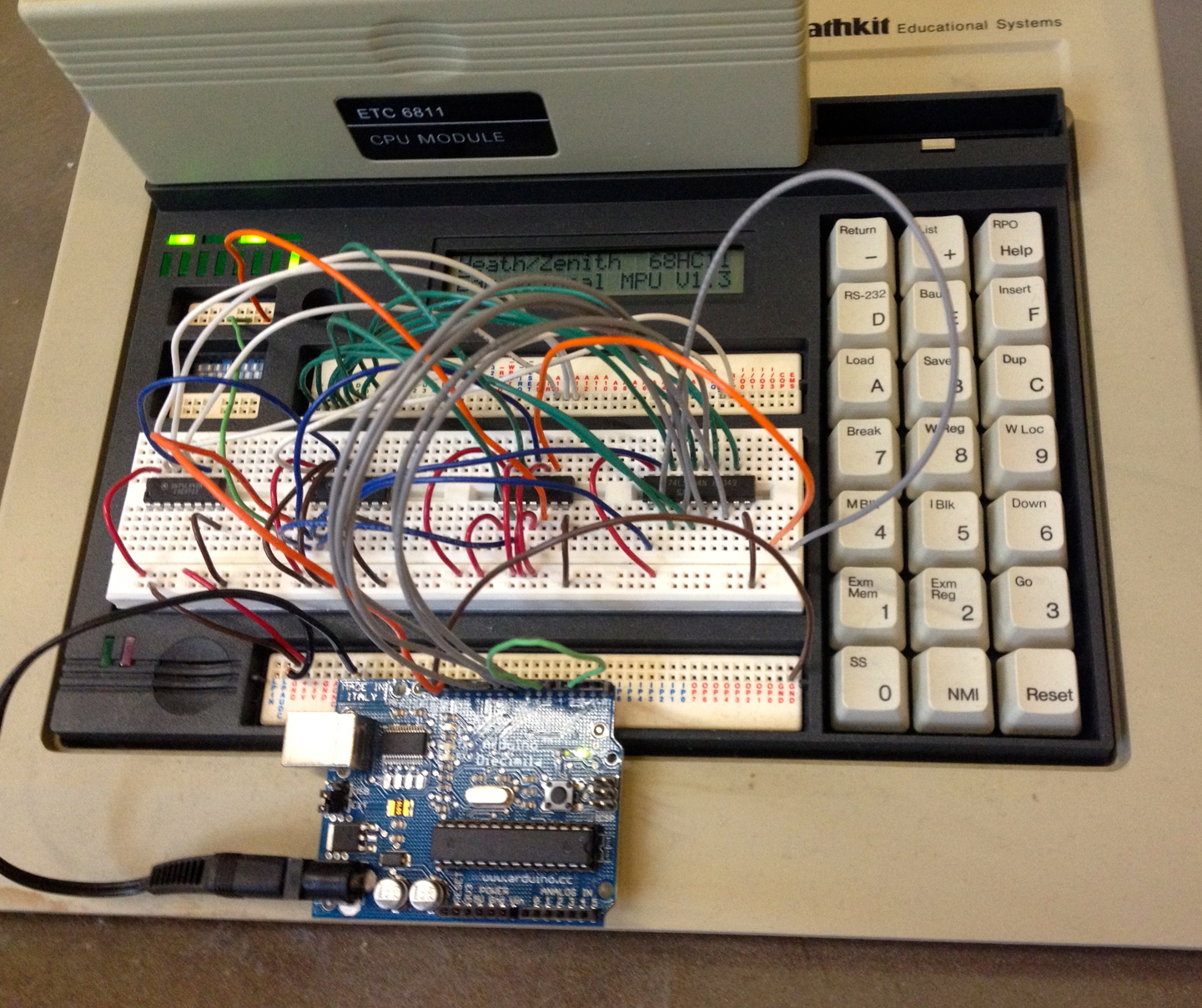Difference between revisions of "CSC103 Weekly Schedule Fall 2012"
(→Weekly Schedule) |
(→Weekly Schedule) |
||
| (59 intermediate revisions by the same user not shown) | |||
| Line 66: | Line 66: | ||
|| | || | ||
* '''Tuesday''' | * '''Tuesday''' | ||
| + | ** [[CSC103_Syllabus_2012F#Overview| A note on registering for CSC102]] | ||
| + | ** (Shameless plug for [http://www.facebook.com/pages/Computer-Science-Smith-College/264041891883 CS Facebook page]) | ||
** Three different "worlds": | ** Three different "worlds": | ||
::{|style="border-collapse: separate; border-spacing: 0; border-width: 1px; border-style: solid; border-color: #000; padding: 0" | ::{|style="border-collapse: separate; border-spacing: 0; border-width: 1px; border-style: solid; border-color: #000; padding: 0" | ||
| Line 86: | Line 88: | ||
|- | |- | ||
|} | |} | ||
| + | ** Logic: truth tables for AND, OR, and NOT operators | ||
** Counting in decimal | ** Counting in decimal | ||
| − | ** Counting in base 8 | + | ** Counting in base 8: 0, 1, 2, 3, 4, 5, 6, 7, 10, 11, 12, 13, 14, 15, 16, 17, 20, ... 76, 77, 100, 101, ... |
| + | ** Interesting published research result: [http://www.upenn.edu/pennnews/news/penn-researchers-make-first-all-optical-nanowire-switch U. Penn designs first optical gate] | ||
| + | <br /> | ||
| + | * '''Thursday''' | ||
** Counting in base 2 (binary) | ** Counting in base 2 (binary) | ||
** Adding in decimal | ** Adding in decimal | ||
** Adding in base 2 | ** Adding in base 2 | ||
| − | * | + | |
| − | + | * [[CSC103 Homework 1 2012f| Homework #1]] and [[CSC103 Homework 1 solutions 2012f | Solutions]] | |
| − | |||
| − | |||
| − | |||
| − | |||
| − | |||
|| | || | ||
* Reading | * Reading | ||
| Line 112: | Line 113: | ||
* '''Tuesday''' | * '''Tuesday''' | ||
| + | ** Q&A | ||
| + | ** Review addition in base 2 | ||
| + | ** <font color="magenta">Claude Shannon</font> (1916-2001): writes a Master's thesis at MIT in 1948, which states that any binary numerical computation can be performed using logic expressions and logic operators. "The whole digital revolution started with [Shannon]"<ref name=NeiSloane>Bell Labs digital guru dead at 84 — Pioneer scientist led high-tech revolution (The Star-Ledger, obituary by Kevin Coughlin 27 February 2001)</ref> | ||
| + | [[Image:270KitWithArduino.jpg|250px|right]] | ||
| + | ** Logic Gates | ||
| + | *** [http://cs.smith.edu/~thiebaut/classes/270/datasheets/sn74ls08rev5.pdf Data sheet] for the AND gate. | ||
| + | *** [http://maven.smith.edu/~thiebaut/classes/270/datasheets/sn74ls32rev5.pdf Data sheet] for the OR gate. | ||
| + | *** [http://maven.smith.edu/~thiebaut/classes/270/datasheets/sn74ls04rev5.pdf Data sheet] for the NOT gate. | ||
| + | *** ([[media:7408-32-04.pdf| All 3 gates in one pdf]]) | ||
| + | ** Logic Design | ||
| + | ** [http://maven.smith.edu/~thiebaut/classes/103/applets.htm Logic-Gate Simulator] | ||
* '''Thursday''' | * '''Thursday''' | ||
| + | ** <font color="red"> HAPPY MOUNTAIN DAY!</font> | ||
---- | ---- | ||
* | * | ||
|| | || | ||
* Reading: | * Reading: | ||
| − | + | ** Logic Gates on [http://en.wikipedia.org/wiki/Logic_gate wikipedia]: You can skip the Universal Logic Gate section, the De Morgan section, and the remaining sections until the end. | |
| + | ** [http://math.hws.edu/TMCM/java/xLogicCircuits/ A good introduction on the Logic Circuit Simulator] which we use in Lab #1 | ||
| + | ** [http://cs.smith.edu/classwiki/index.php/CSWiki_Howto A "HowTo"] document for creating simple Wiki pages (to get you started for next week) | ||
<!-- ================================================================== --> | <!-- ================================================================== --> | ||
|- style="background:#eeeeff" valign="top" | |- style="background:#eeeeff" valign="top" | ||
| Line 123: | Line 138: | ||
|| | || | ||
* '''Tuesday''' | * '''Tuesday''' | ||
| − | ** [http://www.facebook.com/media/set/?set=a.10150543054626884.380818.264041891883&type=1 PC Demolition Lab (Ford Hall Foyer) ] | + | ** [http://www.facebook.com/media/set/?set=a.10150543054626884.380818.264041891883&type=1 PC Demolition Lab (Ford Hall Foyer) ]. [[CSC103_PC_Demolition_Lab_2012 | Prep Sheet]]. |
| + | ** Photos of the event on [http://www.facebook.com/pages/Computer-Science-Smith-College/264041891883 Facebook] | ||
* '''Thursday''' | * '''Thursday''' | ||
| + | <center><videoflash>6H62fyZEYsE</videoflash></center> | ||
| + | <br /><br /> | ||
| + | <center><videoflash>xTQDIiSWK_k</videoflash></center> | ||
| + | <br /> | ||
| + | ** Schematics from [http://klabs.org/history/ech/agc_schematics/index.htm NASA], and a [http://klabs.org/history/ech/agc_schematics/logic/a04-1.jpg specific sheet] showing logic gates. | ||
| + | ** '''<font color="red">[[CSC103 Lab 2012 | Lab #1 in FH241]]</font>''' | ||
---- | ---- | ||
| − | * | + | * [[CSC103 Homework 2 Fall 2012 | Homework 2]] and [[CSC103 Homework 2 Solution Fall 2012 | Solution]] |
|| | || | ||
* Reading | * Reading | ||
| + | ** [http://math.hws.edu/TMCM/java/xLogicCircuits/ A good introduction on the Logic Circuit Simulator] (from [[CSC103 Lab #1 2012 | Lab #1]]) | ||
<!-- ================================================================== --> | <!-- ================================================================== --> | ||
|- style="background:#ffffff" valign="top" | |- style="background:#ffffff" valign="top" | ||
| Line 134: | Line 157: | ||
|| | || | ||
* '''Tuesday''' | * '''Tuesday''' | ||
| + | ** Some comments about the current homework. | ||
| + | ** Creating a Wiki. Demonstration and introduction to the next homework assignment. | ||
| + | ** Quick summary of PC Demolition Lab. What you needed to discover: | ||
| + | *** The processor | ||
| + | *** The Crystal | ||
| + | *** The Random Access Memory (RAM) | ||
| + | *** The power supply | ||
| + | *** The mother board | ||
| + | *** The hard disk | ||
| + | *** The optical disk (DVD/CD player/burner) | ||
| + | *** The Wiring | ||
| + | *** Various Ports | ||
| + | ** How hard disks work: | ||
| + | <center><videoflash>uJKxUPlhvZY</videoflash></center> | ||
| + | ** Disassembling a PC: | ||
| + | <center><videoflash>1qwZ4eqToxI</videoflash></center> | ||
| + | ** Video about the first personal computer (a bit of history!) | ||
| + | <center> | ||
| + | <videoflash>WVwfDA4watU</videoflash> | ||
| + | </center> | ||
| + | ** [[How to Create a Wiki Page | Introduction to creating Wiki pages]] | ||
| + | ** Introduction to Assembly Language: the secret language of the processor! | ||
| + | ** Microprocessor and Assembly Language | ||
| + | ** [[CSC103 A Game of Numbers | Let's play a game]] | ||
* '''Thursday''' | * '''Thursday''' | ||
| + | ** Assembly Language Programming. | ||
| + | ** the [http://maven.smith.edu/~thiebaut/classes/103/applets.htm xComputer Simulator] | ||
| + | ** the [[CSC103 Basic Instructions| Instruction Set]] for our computer | ||
| + | ** [[CSC103 Assembly Program 1 | A first program]] | ||
| + | ** [[CSC103 Assembly Program 2 | A second program]] | ||
| + | ** Execution of selected instructions ([[Media:CSC103InstructionsBeforeAfter.pdf|pdf]]) | ||
| + | ** [[CSC103_Assembly_Language_Lab_2012 | '''Lab''']] | ||
---- | ---- | ||
| − | * | + | * [[CSC103_Homework_3_Fall_2012 | Homework 3]] (officially starts on 10/4, due 10/11) |
|| | || | ||
* Reading | * Reading | ||
| + | ** [http://math.hws.edu/TMCM/java/labs/xComputerLab1.html A good description of the Computer simulator] | ||
| + | ** You will find Wikipedia's [http://en.wikipedia.org/wiki/Central_processing_unit description of the processor] interesting. Concentrate mostly on the sections labeled '''Microprocessor''', '''Operation''', and '''Clock Rate'''. | ||
<!-- ================================================================== --> | <!-- ================================================================== --> | ||
|- style="background:#eeeeff" valign="top" | |- style="background:#eeeeff" valign="top" | ||
| Line 144: | Line 200: | ||
|| | || | ||
* '''Tuesday''': <font color="magenta">'''Fall Break'''</font> | * '''Tuesday''': <font color="magenta">'''Fall Break'''</font> | ||
| + | [[Image:CookieMonsterDeleteCookie.jpg|right|150px]] | ||
* '''Thursday''' | * '''Thursday''' | ||
| + | ** Execution of selected instructions ([[Media:CSC103InstructionsBeforeAfter.pdf| solution]] and [[Media:CSC103InstructionsBeforeAfterTemplate.pdf| template]]) | ||
| + | <br /> | ||
| + | <br /> | ||
| + | <br /> | ||
| + | <br /> | ||
| + | <br /> | ||
| + | <br /> | ||
| + | <br /> | ||
| + | <br /> | ||
| + | <br /> | ||
| + | <br /> | ||
| + | <br /> | ||
| + | <br /> | ||
| + | |||
| + | |||
---- | ---- | ||
| − | * | + | * [[CSC103 Homework 4 Fall 2012 | Homework #4]] and [[CSC103 Homework 4 Solutions Fall 2012 | solutions]] |
|| | || | ||
| − | * Reading | + | * Reading |
| + | ** Primary | ||
| + | *** [http://en.wikipedia.org/wiki/John_von_Neumann Jon von Neumann], who first defined the architecture of modern computers. We are still building computers according to his original unpublished ''draft'' | ||
| + | ** Secondary | ||
| + | *** von Neumann's [http://cs.smith.edu/dftwiki/images/f/f8/VonNewmannEdvac.pdf ''draft''] | ||
| + | *** [http://www.sciencedaily.com/releases/2012/02/120217145747.htm new research in DNA computing]: we are trying hard to find new ways to perform computation and leave the von Neumann architecture. | ||
<!-- ================================================================== --> | <!-- ================================================================== --> | ||
| Line 155: | Line 232: | ||
|| | || | ||
* '''Tuesday''' | * '''Tuesday''' | ||
| − | * '''Thursday''': '''Take-home Final Exam''' | + | ** [[CSC231_Homework_9_Solution_2010 | Example of a real Assembly Language]] program |
| + | ** [http://en.wikipedia.org/wiki/Von_Neumann_architecture von Neumann's bottleneck] | ||
| + | ** John von Neumann | ||
| + | ** The von Neumann ''bottleneck'' [http://cs.smith.edu/dftwiki/images/CSC103_VonNeumannBottleneck.pdf (pdf)] | ||
| + | *** Memory vs. processor. What do dimes and football fields have in common? | ||
| + | *** Attempts to circumvent the bottleneck | ||
| + | **** cache memory | ||
| + | **** multicore architectures | ||
| + | ** [[Introduction_to_Processing | Introduction to Processing]] | ||
| + | <br /> | ||
| + | <center> | ||
| + | <videoflash>vLbllFHBQM4</videoflash> | ||
| + | </center> | ||
| + | <br /> | ||
| + | * '''Thursday''': | ||
| + | ** [[CSC103 Processing Lab | Processing lab]][[CSC103 Processing Lab: Solution Sketches|.]] | ||
| + | **'''[[CSC103 Take-Home Final Exam Fall 2012|Take-home Final Exam.]]''' and [[CSC103 Final Solutions Fall 2012 | Solutions]] | ||
---- | ---- | ||
* | * | ||
|| | || | ||
* Reading | * Reading | ||
| + | ** [http://en.wikipedia.org/wiki/Von_Neumann_architecture The Von Neumann Architecture] | ||
<!-- ================================================================== --> | <!-- ================================================================== --> | ||
| Line 165: | Line 259: | ||
| Week 8 <br /> 10/23<br /> | | Week 8 <br /> 10/23<br /> | ||
|| | || | ||
| − | * '''Tuesday''': Final Exam Q&A | + | * '''Tuesday''': |
| + | ** Final Exam Q&A | ||
| + | ** [http://cs.smith.edu/dftwiki/images/CSC103ExponentialLawsMooresLaysAndKurzweil.pdf Introduction to Exponential Laws, Moore's Law, and Ray Kurzweil] | ||
| + | ** Quiz & Discussion of two papers on the concept of ''Singularity'': | ||
| + | *** [http://cs.smith.edu/~thiebaut/research/singularity/ieee_spectrum__signs_of_the_singularity.pdf Signs of the Singularity] by Vernor Vinge. | ||
| + | *** [http://cs.smith.edu/~thiebaut/research/singularity/ieee_spectrum__can_machines_be_conscious.pdf Can Machine Be Conscious?], Christof Koch and Giulio Tononi. | ||
| + | |||
---- | ---- | ||
* | * | ||
|| | || | ||
| − | * Reading | + | * Reading/viewing |
| + | ** And if you think the idea of the singularity is interesting and want to see how somebody pushes the idea even farther, watch this [http://www.ted.com/talks/susan_blackmore_on_memes_and_temes.html TED talk by Susan Blackmore]! | ||
|} | |} | ||
| Line 176: | Line 277: | ||
<br /> | <br /> | ||
| + | =References= | ||
| + | <references /> | ||
<br /> | <br /> | ||
| Line 187: | Line 290: | ||
<br /> | <br /> | ||
| + | |||
<onlydft> | <onlydft> | ||
=Resources= | =Resources= | ||
Latest revision as of 09:05, 31 October 2012
--D. Thiebaut 12:05, 21 August 2012 (EDT)
Office Hours: Tu-Th: 2:00-4:00 p.m. and by appointment.
Weekly Schedule
| Week | Topics | Reading | ||||||
| Week 1 9/6 |
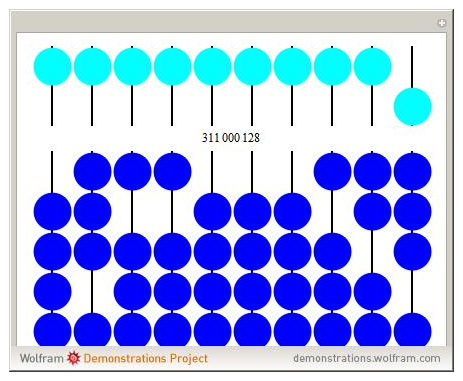
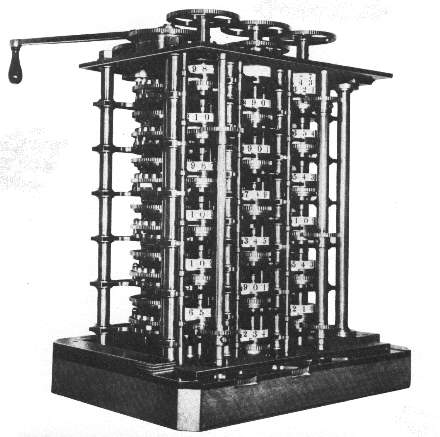
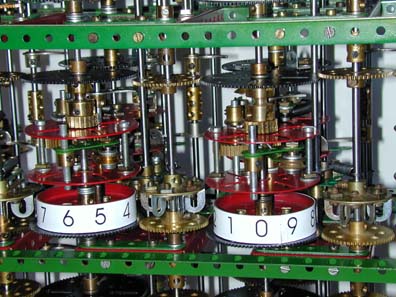
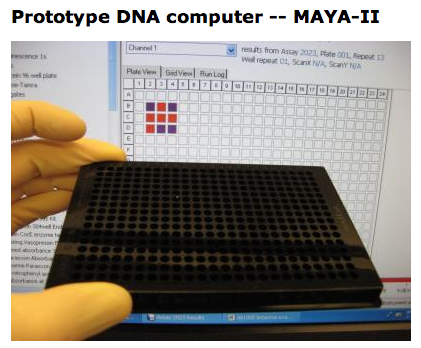
 Antikythera mechanism, oldest computer
(start at 1min 47sec)
 Harvard research: 1.8 zettabytes in 4 grams of DNA
|
| ||||||
| Week 2 9/11 |
|
| ||||||
| Week 3 9/18 |
|
| ||||||
| Week 4 9/25 |
|
| ||||||
| Week 5 10/2 |
|
| ||||||
| Week 6 10/9 |
|
| ||||||
| Week 7 10/16 |
|
| ||||||
| Week 8 10/23 |
|
|
References
- ↑ Bell Labs digital guru dead at 84 — Pioneer scientist led high-tech revolution (The Star-Ledger, obituary by Kevin Coughlin 27 February 2001)
